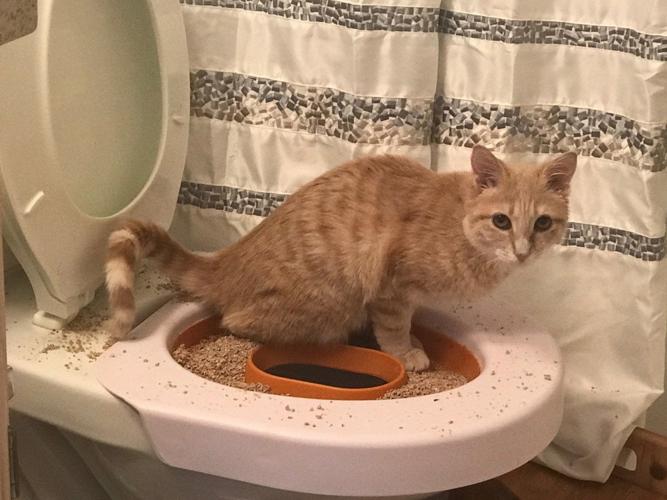Potential Risks of Flushing Cat Poop Down Your Toilet - Advice for Better Handling
Potential Risks of Flushing Cat Poop Down Your Toilet - Advice for Better Handling
Blog Article
The writer is making a few great annotation about Can You Flush Cat Poop Down The Toilet? overall in this content down below.

Introduction
As pet cat owners, it's important to be mindful of how we deal with our feline good friends' waste. While it might seem convenient to purge cat poop down the bathroom, this method can have detrimental repercussions for both the atmosphere and human health and wellness.
Ecological Impact
Flushing feline poop introduces hazardous microorganisms and parasites right into the water, posturing a significant risk to aquatic communities. These pollutants can negatively affect marine life and compromise water quality.
Health Risks
In addition to environmental concerns, flushing pet cat waste can likewise present health dangers to people. Cat feces might consist of Toxoplasma gondii, a bloodsucker that can trigger toxoplasmosis-- a possibly severe ailment, specifically for expectant females and people with damaged immune systems.
Alternatives to Flushing
The good news is, there are more secure and a lot more accountable methods to dispose of cat poop. Take into consideration the adhering to options:
1. Scoop and Dispose in Trash
One of the most typical method of taking care of pet cat poop is to scoop it right into a biodegradable bag and toss it in the garbage. Make certain to utilize a dedicated clutter inside story and dispose of the waste without delay.
2. Usage Biodegradable Litter
Select biodegradable cat clutter made from materials such as corn or wheat. These clutters are environmentally friendly and can be safely taken care of in the trash.
3. Bury in the Yard
If you have a yard, take into consideration hiding pet cat waste in an assigned area away from veggie gardens and water sources. Be sure to dig deep enough to prevent contamination of groundwater.
4. Mount a Pet Waste Disposal System
Buy a family pet garbage disposal system especially designed for cat waste. These systems utilize enzymes to break down the waste, minimizing odor and environmental impact.
Final thought
Responsible animal possession expands beyond giving food and shelter-- it additionally involves appropriate waste administration. By refraining from purging cat poop down the bathroom and opting for alternate disposal approaches, we can decrease our environmental impact and protect human health.
Why You Should NEVER Flush Cat Poop (and/or Litter) Down Your Toilet
The Problem with Litter
The main function of litter is to solidify and adhere to your cat’s waste. While this makes litter excellent for collecting cat poop and urine, it’s also the exact property that makes it a nightmare when flushed down the toilet.
Cat litter can and will clog pipes. There is non-clumping litter, but it’s still quite heavy and can build up in pipes. This is true even of supposed “flushable litter.”
The problems only compound when the litter is already clumped into cat waste. Toilet paper is among the more flushable things, and even too much of that will clog a toilet.
The Problem with Cat Poop
Sewers and septic systems are designed with human waste in mind. The microbes that help break down human waste don’t work on cat waste. Additionally, cat poop plays host to the parasite Toxoplasma gondii.
When flushed, this parasite can enter the environment in places it was never meant to, posing a risk to pregnant women, their unborn children, and other people with compromised immune systems. While it might not seem possible, flushing cat poop can indeed introduce this parasite to the public water supply.
These reasons are why, even if you’ve trained your cat to go on the toilet and flush, which is possible, it’s still not a good idea. Also, pregnant women and the immunocompromised shouldn’t change litter, either.
How to Handle Litter
The best way to handle litter is to simply put it in a plastic bag and place it in the trash. Avoiding environmental risks and possible plumbing damage is worth the extra effort.
You can also invest in devices that seal away your cat’s waste in a separate compartment, so you don’t have to change the litter nearly as often. They’re also safer for pet owners because they limit the possibility of Toxoplasma gondii exposure.
Disposing of litter the old-fashioned way will ensure you won’t have to worry about any issues that flushing the waste can potentially cause.
Take Care of Clogged Pipes with Stephens Plumbing, Heating & Air Conditioning
The reasons you should never flush cat poop down your toilet are numerous, but sometimes the inevitable happens despite your best efforts.
Stephens Plumbing, Heating & Air Conditioning is ready to help if you’re experiencing litter-blocked plumbing. Whether you need us in an emergency or want to schedule regular maintenance, we’re here for you.
https://www.stephensplumbing.net/bathroom-plumbing/never-flush-cat-poop-down-your-toilet/

I ran across that article about How to Dispose of Cat Poop and Litter Without Plastic Bags while doing a search on the internet. Those who enjoyed reading our post if you please be sure to pass it around. Thanks a lot for your time. Please check up our website back soon.
Click Here Report this page